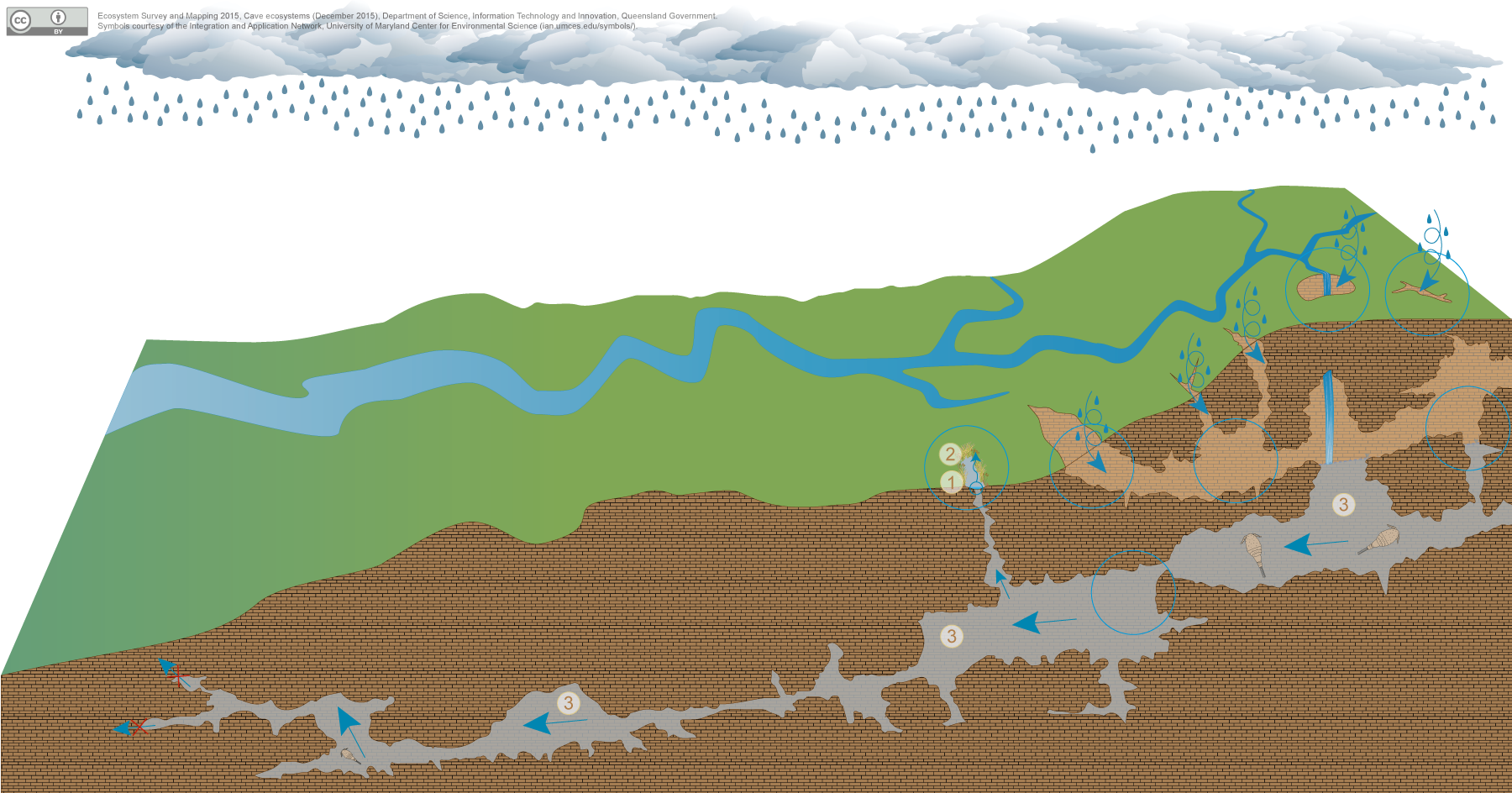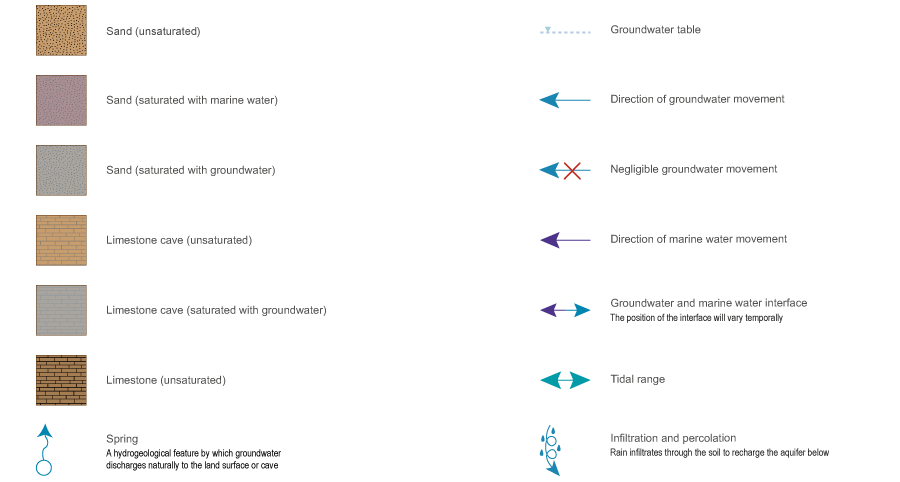|
|
Cave ecosystemsCave ecosystems
Click on elements of the model or select from the tabs below Subterranean wetlands include all underground areas containing water, including caves and aquifers. Subterranean cave systems are groundwater dependent ecosystems. Subterranean cave systems with large void sizes are part of ‘karst landscapes’ often characterised by sinkholes and springs. Karst landscapes are commonly found in regions where carbonate rocks are abundant. Carbonate rock may be fractured and/or dissolved by mechanical weathering and chemical weathering from contract with water (e.g. rain and soil water naturally containing weak acids). Subterranean cave ecosystems can be divided into four zones (shown as focal circles in the conceptual model):
Subterranean cave systems may store and transmit groundwater through the void spaces created through the interaction of carbonate rocks and water over time. Groundwater in these subterranean cave systems may support plant and/or animal communities, ecological processes and delivery of ecosystem services. Subterranean cave systems may support stygofauna (aquatic fauna that depend on groundwater for all or some of their life cycle) and troglofauna (terrestrial, air-breathing fauna for which groundwater provides a humid environment and transmits nutrients from the surface environment). The discharge of groundwater from cave systems may also support:
Pictorial conceptual model PDF Additional linksLast updated: 18 December 2015 This page should be cited as: Queensland Government, Queensland (2015) Cave ecosystems, WetlandInfo website, accessed 8 May 2025. Available at: https://wetlandinfo.des.qld.gov.au/wetlands/ecology/aquatic-ecosystems-natural/aquifers-caves/caves-inland/ |

 — Department of the Environment, Tourism, Science and Innovation
— Department of the Environment, Tourism, Science and Innovation







